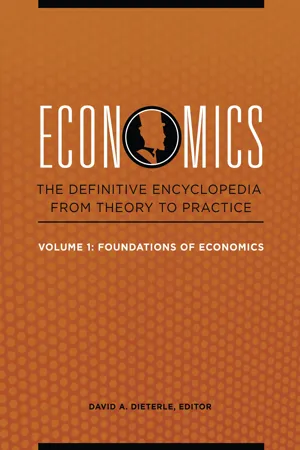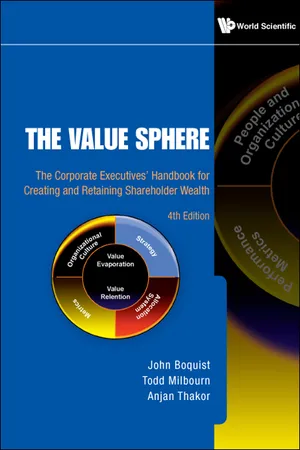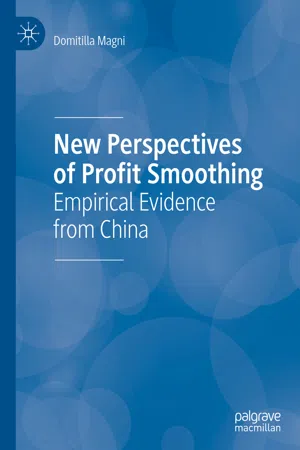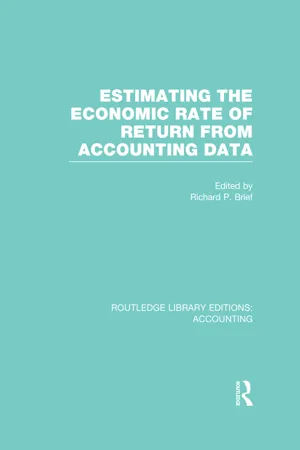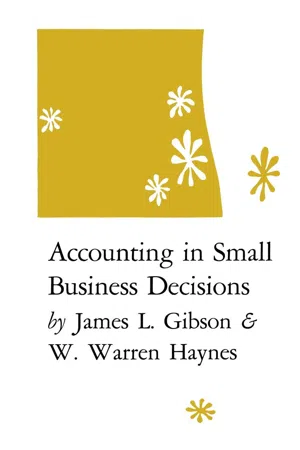Economics
Economic Profit vs Accounting Profit
Economic profit is the difference between total revenue and total opportunity costs, including explicit and implicit costs. It considers both explicit and implicit costs, including the opportunity cost of the resources used. Accounting profit, on the other hand, only considers explicit costs and is calculated by subtracting explicit costs from total revenue.
Written by Perlego with AI-assistance
Related key terms
Related key terms
1 of 4
Related key terms
1 of 3
9 Key excerpts on "Economic Profit vs Accounting Profit"
- eBook - ePub
Economics for Policy Makers
A Guide for Non-Economists
- Gustavo Rinaldi(Author)
- 2019(Publication Date)
- Routledge(Publisher)
The video presents some concepts presented in this unit. The fact that accounting profit is positive does not mean that the business creates value. If opportunity costs are added, a profit may become a loss. Many businesses may operate for long periods without generating economic profit; they basically survive and remunerate intermediate consumption, capital and labour, but do not add any further value. This is the frequent case with many small businesses.A company can have economic losses while it is posting accounting profits. An example: in 2002, McDonald’s posted accounting profits of $893m but if investors put their money into an investment with similar or lower risk projects, they earned an additional $124m (Table 1.6 ).Glossary
accounting profitProfit calculated according to accounting criteria; it includes only explicit costs. It is the basis for paying taxes and dividends and for obtaining credit from banks.capitalA firm’s capital is the sum total of (1) financial assets including cash and funds held in deposit accounts at banks, (2) tangible equipment and machinery used in the firm’s production operations, (3) buildings used in the production or storage of the firm’s goods. The materials consumed in the course of the production process are not classified as capital.depreciationThe annual loss of value accruing to the capital of a firm or country due to wear, obsolescence and accidents.economic profitProfit calculated according to economic criteria: it is an instrument for deciding whether or not to pursue a project. It indicates that a project or a firm creates value, i.e. that the value of the output is greater than the value of all inputs used. If positive, it indicates that the value obtained with this use of resources in one project or firm is greater than the value achievable with the best alternative use of the same resources. - eBook - ePub
Entrepreneurial Finance
Fundamentals of Financial Planning and Management for Small Business
- M. J. Alhabeeb(Author)
- 2014(Publication Date)
- Wiley(Publisher)
a ).Total cost could also include the implicit cost in addition to the explicit. The implicit cost (IC) is represented by the opportunity cost of the used resources. If that is the case, then the calculated profit would be called the economic profit (πe ).Economists tend to consider the foregone value of resources that would have been earned had they been used in any alternative purpose.Since the accountant's profit is a straightforward and direct concept in its measurement, it is used in the business books. The economic profit, on the other hand, would be more suitable for the purpose of decision-making and risk and return assessments.Profit can very well measure the efficiency of a business. As firms pursue their self-interest, the mechanism of profit maximization would work wonders on the allocation of resources. By such a mechanism, resources would be automatically moved toward the production of goods and services that are most valued and demanded by society. Over time, firms which are making fewer profits would leave their projects and seek to employ their resources in more profitable endeavor and may enter more lucrative markets. Eventually, collective market efficiency would be established and aggregate welfare would be achieved. Profit and profitable projects and sectors would ultimately indicate business efficiency while losses would signal the lack of efficiency. - eBook - ePub
Economics
The Definitive Encyclopedia from Theory to Practice [4 volumes]
- David A. Dieterle, David A. Dieterle, David A. Dieterle(Authors)
- 2017(Publication Date)
- Greenwood(Publisher)
Economists must also consider sunk costs, or costs that are incurred but are not important to current decision-making. This may include the costs of the machinery or equipment necessary to start a business. Sunk costs may also be considered a barrier to entry into a particular market as they may be very high.Costs can also be further broken down into average fixed cost, average variable cost, and average total cost. Average fixed costs are calculated by dividing fixed costs by the quantity being produced. Average variable costs are calculated by dividing variable costs by the quantity being produced. Average total cost is calculated by summing the average fixed costs and the average variable costs or by dividing total cost by the quantity being produced. All of these cost curves can be displayed in a graphical format and are commonly used in microeconomics.It is also important to note that economists and accountants measure profit differently. Economists examine both explicit and implicit costs and revenues, which takes the opportunity cost into consideration. They look at what was given up by choosing to produce the current good or service.An accountant examines only explicit costs and revenues. This means an accountant takes the total revenue and subtracts all expenses to determine the level of profit. Therefore, there is a difference in accounting profit and economic profit, and it is possible to earn an accounting profit but no economic profit.One form of economic profit is a normal profit, where the economic profit is zero. This type of profit is common in both a perfectly competitive market as well as a monopolistically competitive market in the long run.Economic costs and profits should be taken into consideration when one is looking to start a business. Firms always seek to minimize costs while maximizing profit.Angela M. LoPiccoloSee also: Costs; Profit Maximization and Behavioral Economics; Vol. 1 : Foundations of Economics: Cost-Benefit Analysis; Opportunity CostsFurther ReadingDixon, Robert L. Jr. 1940. Fixed and variable costs. The Accounting Review 15: 218–22.Luther, Robert G. 1992. Fixed and sunk costs in decision-making. Management Accounting - eBook - ePub
Wealth, Welfare and the Global Free Market
A Social Audit of Capitalist Economics
- Ibrahim Ozer Ertuna(Author)
- 2016(Publication Date)
- Gower(Publisher)
In markets that are fully competitive, only a homogeneous product is traded among a great number of buyers and sellers, none of whom is able to influence the market. It is also assumed that in these markets there is no barrier to entry, transportation costs do not exist and there is full information on anything relevant to the markets. Under these assumptions, the competition among sellers will eliminate profits, costs will be minimum, and the price, marginal revenue, average cost and marginal cost will all be the same. In perfectly competitive markets, there would be no profit or income that is not deserved. As we have explained in previous chapters, in real life, and under recent economic developments, it is not possible to talk about homogeneous products. We have explained that in the current conditions the products are split into two parts: hardware and software. Even if the products’ hardware is the same, their software differentiates them. And we know that in the new economic design that has emerged after the GATT and the establishment of the WTO, the software of the products is fully protected in order to grant their owners monopoly power. We may say that in the new economic design, profit is the return on the products’ software. The accounting definition of profit is quite different. In accounting, profit is the income of the stockholders, the capitalist owners. Profit is defined as the difference between revenues and expenses. Accounting profit is defined very precisely. Expenses are defined as expired costs. And profits are determined by deducting expenses from the revenues that they help to generate. 1 In turn, the expenses are the costs of goods sold, selling and administrative expenses, and the interest expense. Labor is a cost item in production together with the material and overhead costs. As it is seen, accounting considers all factors other than the stockholders’ capital to be cost factor - eBook - ePub
Production and Cost Functions
Specification, Measurement and Applications
- Erkin Bairam(Author)
- 2018(Publication Date)
- Routledge(Publisher)
the ‘profit’ or ‘loss’ disclosed in the income statement of firms). Perhaps surprisingly this simple fact has been overlooked in much of the accounting literature in the past two to three decades. An overly close focus on economic theory considerations by accountants trying to understand the theoretical basis of accounting measurement is partly responsible for this omission. In the accounting literature there are two main competing views on how to best understand what it is that accounting earnings (and asset values) represent to the measurer about the ‘real world’. 15 Within the confines of what is referred to as strict ‘historic cost accounting’ both interpretations amount to much the same thing. However when non-historic cost data is considered, reconciling the two views becomes much more problematic and it becomes more important as to which view is taken as being the proper starting point (i.e. as axiomatic). One view is ‘profit and loss account’ oriented holding that accounting numbers are the result of ‘matching’ revenues and expenses in productive activities, produced with the primary purpose of measuring firm or individual performance. The net costs of activities which are finished (‘realized’) contribute to the profit of the firm in the income statement and costs incurred in activities which are unfinished (‘unrealized’) are shown in the balance sheet as ‘assets’ and carried forward to appear in future income statements of the firm. This view is highly descriptive of what accountants actually do when they prepare a set of accounts for a firm and has an old pedigree (e.g. see Littleton, 1953). However it appears to many accounting theorists to lack economic motivation (i.e. what do the resulting accounting numbers tell the user about the economic value of the firm?). An inability to answer this question has led to a focus upon the alternative ‘balance sheet oriented’ view of accounting numbers - eBook - ePub
The Value Sphere
The Corporate Executives' Handbook for Creating and Retaining Shareholder Wealth
- John Boquist, Todd Milbourn, Anjan Thakor(Authors)
- 2009(Publication Date)
- WSPC(Publisher)
Reaching for the article he'd just put down, Jerry said, “No, I haven't changed my mind, so I'll sign it. And you're not wiggling your way out of this job quite that easily. But if we're done, I want to talk about Economic Profit.”“Sure,” said Bob. This was one of his favorite topics. “I know how it's defined and all that. It's laid out quite clearly in our manual,” said Jerry. “What I want is a concise summary of why a company like ours should consider using it.” Bob walked over to the white board in Jerry's office to explain. He began with an overview.“Jerry, I believe there are five important reasons why Economic Profit is a good performance measure to include in our Value Sphere. First, as an internal operating performance measure, it seems conceptually well aligned with the way stock market analysts look at firms for valuation purposes. Second, it is an excellent tool for strategic resource allocation. Third, it can be used effectively in capital budgeting because it never conflicts with net present value (NPV). Fourth, it lends itself nicely to value-driver analysis of components of shareholder value. Finally, it fosters an ownership mindset when tied to compensation and performance assessment. This last advantage is the most important. Economic profit is first and foremost a behavioral tool.”Bob then proceeded to explain each advantage in detail. A summary of his conversation with Jerry is provided in the following sections.2. Economic Profit and Shareholder Wealth CreationThere are many different ways to measure shareholder wealth creation. One is total shareholder return, which measures the return earned by the shareholders in price appreciation and dividends over any chosen time period.The other is market value added (MVA), measured as the difference between market value and adjusted book value. This could be a measure we could define over any time period we choose.Let us consider the first way to measure shareholder wealth creation. To deliver to the shareholders the total return they expect based on the risk they are exposed to, internal decisions must strive to deliver consistently positive and growing economic profit. This link between capital market expectations and managerial decision making within the firm is shown in Fig. 10.1 - eBook - ePub
New Perspectives of Profit Smoothing
Empirical Evidence from China
- Domitilla Magni(Author)
- 2019(Publication Date)
- Palgrave Macmillan(Publisher)
accounting rules. Many, from the classical economists, have tried to approach the issue of profit and its assessment; others have governed just the accounted nature and added, in an already-busy contest, many theories and definitions on the subject. The evolution of knowledge of business, finance, and economics has allowed an increase in previous studies on profit. Firm and its management have become, over the years, the main focus of managerial analysis, assuming relevance that is both increasingly global and interdisciplinary. The rules and economic directives require continuous management apparatus, overwhelmingly, on the ability to persist over time, in conditions of economic and financial equilibrium. Changing the appearance and nature of the firm changes accordingly the approach of business manager and the role of profit management. Profit has always been analyzed as a residual item in the firm but it changes its shape, and is approached by most as a strategic financial variable.Profit must be closely related to the concept of enterprise, and, in that sense, the very determination of profit justifies the existence of all the firm’s production equipment and is considered indispensable and underlying any business activity. At a firm level, profit is considered as a goal to itself or, alternatively, in connection with other goals such as growth or efficiency.1Before analyzing all the literature and theories of economists who have debated the notion of profit,2 it is necessary to clarify how and through which mechanisms the search for profit can influence the business behaviors, and, finally, it is appropriate to dissolve some inherent nodes both the role of profit as an economic category and its nature.From these initial considerations, it is understood that, in the first place, the subject of the profit should be identified. The need to differentiate, in a theoretical way, the profit from the worker’s wage, from the natural resource owner’s income, and from the interest generated by the liquidity loan, manifests itself at the same time as the historical process of capitalist division of labor.3 In this case, the historical recalls are fundamental: on the one hand, the progressive fragmentation of trades into specializations, the fragmentation of craftsmanship, and the expansion of the merchant system have prompted the making of entrepreneurs-merchants, concerned about buying the products to bring them to the markets and to sell raw material to every single producer, gaining a profit. On the other hand, the separation of workers from work tools, the organization of work in the factory, and the continuous technological changes have overwhelmingly overlooked the overproduction of production, creating new problems with regard to its appropriation and its intended use for purpose consumption or accumulation. In parallel, a new social structure emerged, in which a class—that of entrepreneurs-producers—took the power to decide how, what, and how many to produce.4 - Richard Brief(Author)
- 2013(Publication Date)
- Routledge(Publisher)
Of greater practical importance is the opportunity which widespread knowledge of these formal connections makes possible for tidying up corporate financial planning. It is a simple matter to tie together financial statement projections and economic measures of value. There is reason to hope that doing so might reduce functional fixation with accounting numbers.Examination of Corollary 1 reveals that any all-inclusive measure of profit (suitably adjusted) can be discounted back to economic value. Hence the choice of profit concept must depend on other factors. For example, the choice could depend on the predictive value of the profit time-series, or on the indications which the accounting signals provide of the firm’s adaptive capacity. Theorem 1 pinpoints the impact that opening and closing differences between the accounting and economic asset valuations can have on the model. The extent oJ these are dependent on (a) choice of accounting models and (b) the decision problem to hand. In capital budgeting the errors are of no importance at all.Results are presented indicating the mathematical connections between accounting and economic yields. Again, the relationships hold regardless of the profit construct employed. Whether or not accounting yields have any economic significance outside of this mathematical relationship with the IRR depends on the accounting model involved. Notwithstanding the suggestion of Brief et al. (1980) to the contrary, it is difficult to assign economic significance to accounting yields except either (a) as surrogate measures of IRR or (b) when they are defined in terms of entryor exit-market process. But this is another story.Notes1 Alternatively, if Ct is the certainty-equivalent of the expected dividend, rather than expected value, then it is the one-period riskless rate of interest.2- eBook - ePub
- James L. Gibson, W. Warren Haynes(Authors)
- 2021(Publication Date)
- The University Press of Kentucky(Publisher)
The fact that accounting does not do everything that economic theory might ask of it is not necessarily a criticism of accounting practices. Since traditional accounting and economics are concerned with different questions, it should be no surprise that they often find different answers. There can be no dogmatic conclusions about what degree of theoretical refinement is justified in practical, day-to-day business, especially the small business in which the expenses of refinement are a real barrier to the full application of economic analysis. We hope that an intensive study of actual cases will help determine the extent to which small firms can afford to carry their analysis, whether this analysis is accounting or economic in character.1 Kenneth E. Boulding, A Reconstruction of Economics (New York: John Wiley & Sons, Inc., 1950), p. 27.2 See National Association of Cost Accountants, Direct Costing , N.A.C.A. Research Report No. 23, April 1, 1953.3 See James S. Earley, “Recent Developments in Cost Accounting and the ‘Marginal Analysis,’” Journal of Political Economy , LXIII (June, 1955), 227-42.4 See Robert I. Jones, Merchandise Management Accounting in Practice (Chicago: Arthur Anderson and Co., 1957); special issue on merchandise management accounting, Journal of Retailing , XXXIV (Spring, 1958); Malcolm P. McNair and Eleanor G. May, “Pricing for Profit: A Revolutionary Approach to Retail Accounting,” Harvard Business Review , XXXV (May-June, 1957), 105-22.5 “Tailor-Making Cost Data for Specific Uses,” N.A.C.A. Bulletin ,1954 Conference Proceedings , pp. 1691-1707. Reprinted in William E. Thomas, Jr. (ed.), Readings in Cost Accounting, Budgeting and Control (Cincinnati: South-Western Publishing Co., 1955), pp. 314-32.6 Joel Dean, Managerial Economics (Englewood Cliffs, N. J.: Prentice-Hall, 1951), pp. 12-28.7 These remarks refer to the traditional core of accounting. Accounting can be defined broadly to permit estimates, judgments, predictions, and the other features required by managerial economics. For a broad definition of accounting, see “Report of the Committee on Management Accounting,” Accounting Review
Index pages curate the most relevant extracts from our library of academic textbooks. They’ve been created using an in-house natural language model (NLM), each adding context and meaning to key research topics.
Explore more topic indexes
Explore more topic indexes
1 of 6
Explore more topic indexes
1 of 4


